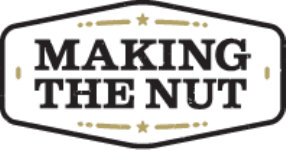Confessions of a Hacker – Practice with purpose
How many times have you seen someone bashing balls at the driving range, hitting a few short shots at the chipping green or rolling a few along a putting green? No doubt the number is extremely high. Now, add one further dimension to that – what percentage of those people would have a legitimate response to the question "What specifically are you working on right now?" I’ll bet the answer is rather low. Most things in life are more successfully approached with some form of game plan – practicing your golf is no different.
It has been said by many a more learned golfer than I that simply going to the driving range and hitting shots without a purpose isn’t practice; it’s merely exercise. Watch any professional (or indeed, many high calibre amateurs) practice and you’ll see an array of clubs laid out – some for actually hitting balls with, others as guiding tools for issues that they’re working on such as alignment and ball position. What used to be an empty patch of turf now more closely resembles an office desk or a work bench, which if you think about it for a moment is exactly what should happen when practicing effectively.
At the risk of over-simplifying things a bit, effective practice can be broken down into three main categories:
(1) Working on swing fundamentals.This is particularly true of the period immediately after a lesson (when you’re trying to replace bad old habits with improved new ones), but also applicable to making sure that your grip, posture, alignment and ball position are all correct. When you see a tour pro hitting balls with clubs running parallel to the target and perhaps another one on the ground between their legs, you can be sure those are prompts for them to get their alignment and ball position correct.
(2) Working on a particular type of shot, or with a particular club in your bag. Are you trying to hit soft fades, strong draws, low shots or high shots? Is your driver causing you some ongoing grief? Is it shots from around 80 to 100 metres out that are giving you fits? At the chipping green, are you working on some bump-and-run style shots, or some high and soft lobs? During most situations on the course, you’ll picture a certain type of shot before you step up to hit it – the same principle should apply to anything you do at the practice range.
(3) Simulating on-course scenarios.This is one that I like to apply at the range, where you basically try to ‘play the course’. For example, after a few warm-up shots I’ll grab the driver and for all intents and purposes hit my tee shot off the par-5 opening hole. What happens next depends on the quality of that drive. A straight drive will see the next shot hit with either 5-wood or a long iron; an errant tee shot means hitting a low punch shot out of the metaphoric trees and then a short iron approach to the green. Similar principles apply to the tee shot off the second hole, and so it goes.
This strategy also means that the amount of practice you do with each club in your bag reflects how often you might use them on the course. There’s not much point in hitting balls with only your 7-iron if that same club gets used maybe four or five times per round. The old axiom of ‘practice how you play’ rings very true here.
It goes without saying that golf is a game of imperfections and mistakes. Nonetheless, another well-worn cliché about practice really surmises how much value you truly derive from it. Practice doesn’t make perfect, perfect practice makes perfect.
Previous ‘Confessions of a Hacker’ columns:
(1) Seeking help, (2) Racking them up, (3) Holding your nerve, (4) Five-foot putts, (5) Letting the Big Dog eat, (6) Slow play, (7) Trust the yardage , (8) Learning from low markers, (9) Learning from high markers, (10) Playing in the sandpit, (11) Shaping your shots, (12) Missing one-foot putts, (13) New sticks, (14) Perspective, (15) Bad company

